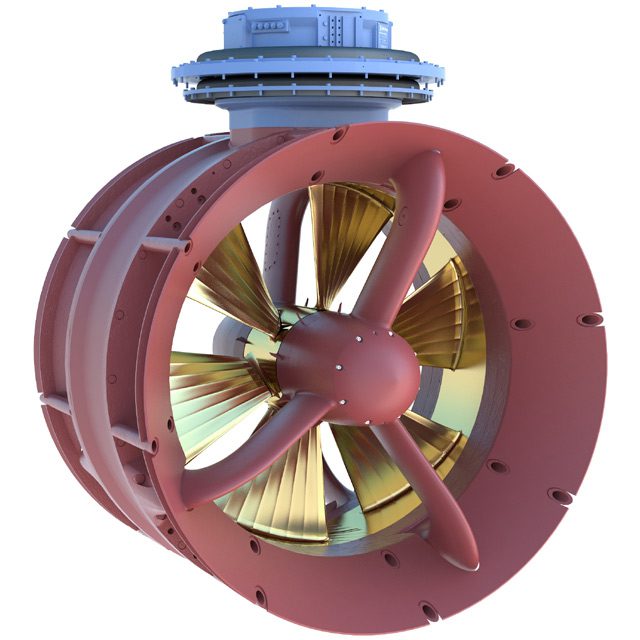Seems like a pretty cool idea: http://gcaptain.com/norwegian-cruise-liner-outfitted-permanent-magnet-tunnel-thrusters/

Instead of having a shaft or some other geared mechanism connected to a motor, the propeller blades themselves are the the motor which provides the maneuvering thruster to bring Norwegian Cruise Line’s Norwegian Epic in-and-out of port.
The thruster blades and the rim to which they are attached are are actually the “rotor” component of Rolls-Royce’s permanent magnet motor which rotate when energized by the magnetic field that is generated by the stator – the stationary component of the thruster.
This is Rolls-Royce’s first customer within the cruise sector to utilize this technology which the company says offers numerous advantages over traditional tunnel thrusters including, significant reduction in noise and vibration, an increase in power output of around 25% from the same size propeller, and is able to be changed out underwater which eliminates the need for dry docking.
Jay McFadyen, Rolls-Royce’s Senior Vice President – Marine Services, Americas says this new permanent magnet tunnel thruster is an upgrade to the ship’s existing propulsion package. The ship was delivered to the NCL in 2010 from STX France.
“This highly innovative and cutting edge permanent magnet technology is suitable for a range of applications in both merchant and offshore vessels, where exceptionally low noise levels, high power output, and rapid response to power demand will benefit operators, crew and, very importantly, passengers alike,” says McFadyen.
“What we have seen so far through the experience of our first permanent magnet tunnel thruster in operation on the Rolls-Royce designed Olympic Octopus, a highly advanced offshore anchor handling vessel, is that a permanent magnet motor thruster is quiet, efficient and durable. It is capable of running for thousands of hours in intensive dynamic positioning (DP) mode, where rapidly varying loads and alternating thrust directions are the norm.”
Other benefits of permanent magnet technology include the freeing up of space directly above the thruster where traditional tunnel thruster motors are located, and a symmetrical design that gives equal thrust to port or starboard.
